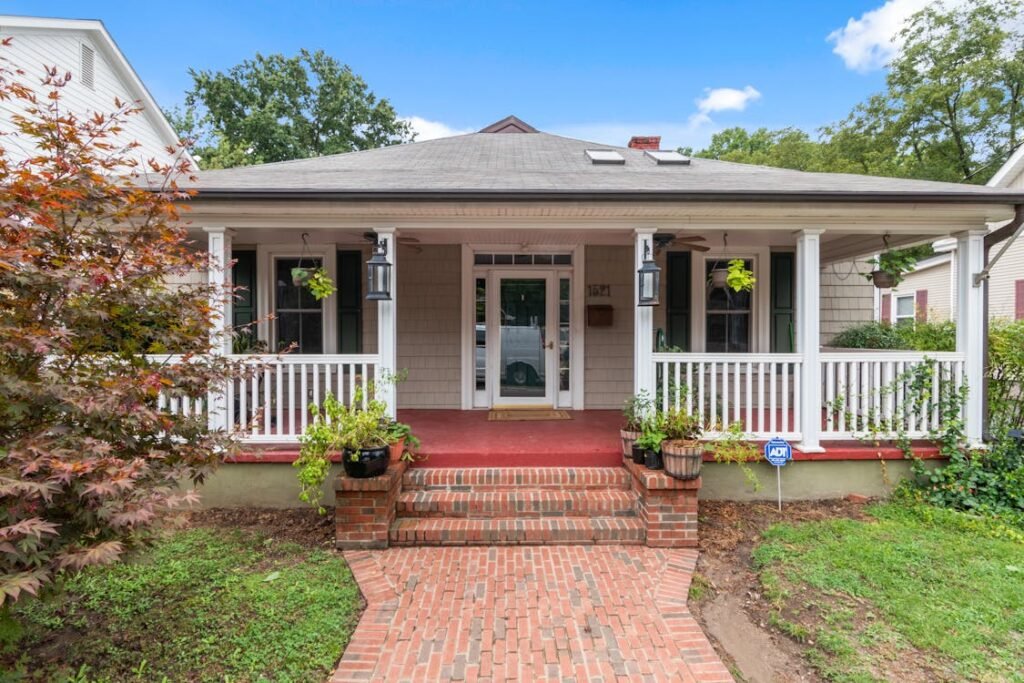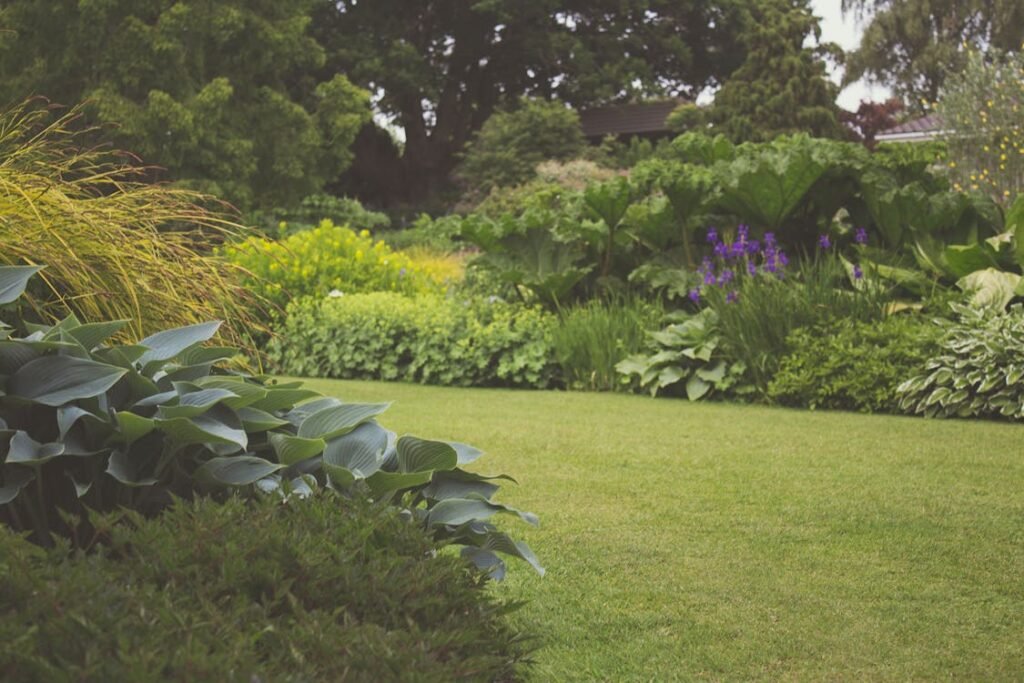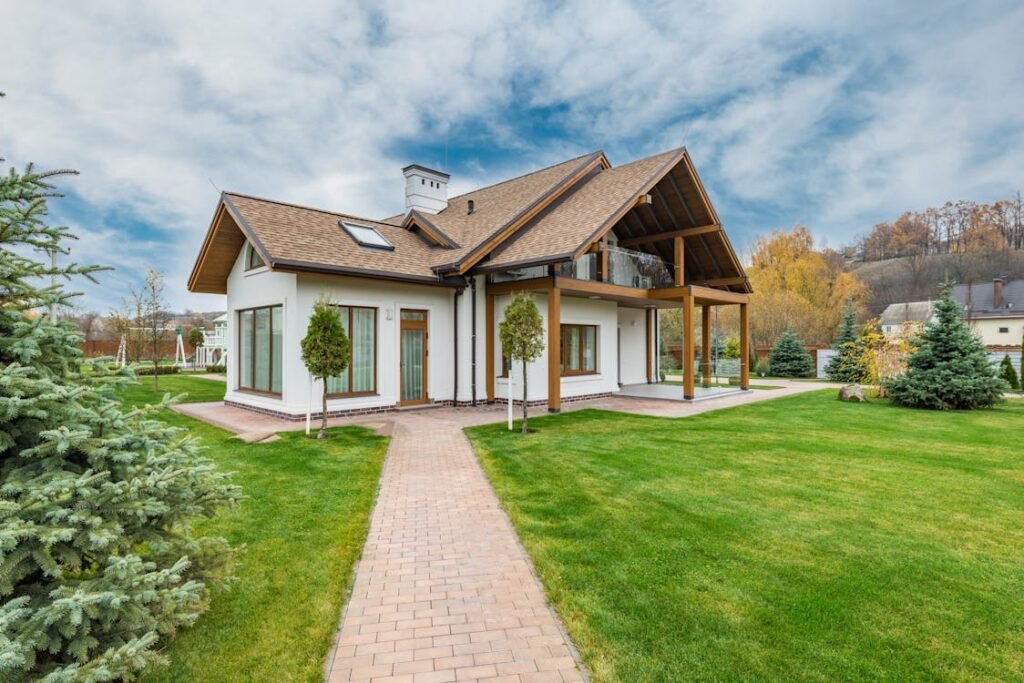A thoughtfully designed landscape does more than enhance your home’s curb appeal. A well-crafted landscape not only increases your property’s value but also improves your quality of life.
Navigating the intricacies of landscaping in Sacramento requires local expertise. With its unique climate and soil conditions, the region presents specific challenges and opportunities. That’s why insights from professionals like South Canyon Construction are invaluable. Our team understands the local environment and can guide you in creating a sustainable and stunning outdoor space.
1. Understand Sacramento’s Climate for Landscape Success

Sacramento’s Mediterranean Climate
Sacramento enjoys a Mediterranean climate with distinct seasons. Summers can be scorching, often exceeding 90°F, while winters are mild with temperatures averaging around 50°F. Rainfall is seasonal, with the majority occurring between November and March, leading to extended dry periods.
How Seasonal Temperatures, Droughts, and Soil Types Influence Plant Choices
The seasonal temperature swings and periodic droughts necessitate selecting plants that can withstand heat and require minimal water. Sacramento’s soil varies from sandy loam to heavy clay, affecting drainage and root growth. Understanding these factors is crucial for plant health and longevity.
Importance of Choosing Climate-Appropriate Plants
Opting for plants suited to Sacramento’s climate reduces maintenance and water usage. Drought-tolerant and native species are more resilient, guaranteeing your landscape thrives despite environmental stresses.
2. Planning and Designing Your Landscape Layout
The Benefits of Professional Landscape Planning
Professional planning brings a cohesive vision to your outdoor space. Experts at South Canyon Construction will consider factors like sunlight exposure, soil conditions, and aesthetic preferences to create a functional and beautiful landscape that complements your home.
How to Incorporate Features Like Patios, Pathways, and Garden Beds
Incorporating hardscape elements like patios and pathways enhances usability and flow. Garden beds add color and texture, serving as focal points or borders. Strategic placement of these features maximizes space and creates inviting areas for various activities.
Tips for Creating Zones for Different Activities
Divide your landscape into zones catering to different functions—entertaining, relaxation, play, or gardening. Use natural barriers like hedges or decorative elements like pergolas to delineate spaces while maintaining a harmonious overall design.
3. Selecting the Right Plants for Sacramento’s Environment

Recommendations for Drought-Resistant and Native Plants
- California Poppy: A vibrant native flower requiring minimal water.
- Lavender: Drought-tolerant with aromatic blooms.
- Manzanita: An evergreen shrub native to California.
- Succulents: Low-maintenance plants perfect for hot, dry conditions.
Why Local Plants Thrive and Require Less Maintenance
Native plants are adapted to the local climate and soil, making them hardier and less dependent on irrigation or fertilizers. They also support local wildlife, promoting biodiversity.
The Benefits of Shade Trees in Sacramento’s Hot Summers
Planting shade trees like the California Sycamore or Valley Oak can significantly reduce temperatures in your yard. They provide relief from the sun, lower energy costs by shading your home, and enhance the landscape’s aesthetic appeal.
4. Proper Irrigation System Installation
Why Efficient Watering Is Essential for Sacramento Landscapes
Water conservation is critical due to Sacramento’s dry seasons and occasional drought restrictions. An efficient irrigation system makes sure that your plants receive the necessary hydration without waste.
Drip Irrigation vs. Sprinkler Systems: Which Works Best?
- Drip Irrigation: Delivers water directly to the plant roots, reducing evaporation and runoff—ideal for gardens and individual plants.
- Sprinkler Systems: Suitable for lawns and larger areas but can be less efficient due to wind and evaporation.
Tips for Installing an Irrigation System That Conserves Water
- Install a smart controller to adjust watering schedules based on weather conditions.
- Use moisture sensors to prevent overwatering.
- Regularly check for leaks or clogged emitters.
5. Soil Preparation: The Foundation of a Healthy Landscape

How Sacramento’s Soil Types Impact Plant Health
Soil in Sacramento ranges from well-draining sandy loam to heavy clay, which retains water. Knowing your soil type influences plant selection and soil amendment needs.
Tips for Testing and Improving Soil Quality Before Installation
- Conduct a soil test to determine pH and nutrient levels.
- Incorporate organic compost to improve soil structure and fertility.
- Adjust pH levels if necessary to suit the plants you intend to grow.
The Importance of Using Organic Materials and Mulch
Organic materials enrich the soil, promote beneficial microorganisms, and improve water retention. Mulching conserves moisture, suppresses weeds, and regulates soil temperature.
6. Hardscaping Tips for a Functional and Aesthetic Landscape
Popular Hardscaping Options for Sacramento Homes
- Natural Stone: Durable and blends seamlessly with the natural environment.
- Gravel Paths: Affordable and excellent for drainage.
- Pavers: Versatile and available in various designs and materials.
How to Blend Hardscaping with Plant Features for Visual Appeal
Integrate hardscape elements with soft landscaping by surrounding patios with garden beds or using climbing plants on trellises. Balance is key—combine textures, colors, and materials to create a cohesive look.
Expert Advice on Installing Walkways, Retaining Walls, and Outdoor Living Areas
- Makes sure proper drainage to prevent water pooling.
- Use quality materials suited for Sacramento’s climate.
- Consider professional installation for complex projects to make sure of safety and longevity.
7. Maintenance Practices to Keep Your Landscape Looking Its Best

Seasonal Maintenance Tips Specific to Sacramento’s Climate
- Spring: Fertilize and prepare soil; plant new species.
- Summer: Mulch to retain moisture; monitor irrigation.
- Fall: Prune and remove dead foliage; prepare for cooler temperatures.
- Winter: Protect sensitive plants; plan for spring planting.
Best Practices for Pruning, Fertilizing, and Pest Control
- Prune during dormant seasons to encourage growth.
- Use organic fertilizers to promote soil health.
- Implement integrated pest management to minimize chemical use.
How to Create a Maintenance Schedule to Keep Plants Healthy Year-Round
Develop a calendar marking key tasks each season. Regular maintenance prevents issues and keeps your landscape vibrant.
8. Sustainable Landscaping Solutions
How to Incorporate Sustainability into Your Design
- Rain Gardens: Collect runoff to water plants naturally.
- Composting: Recycle yard waste into nutrient-rich soil.
- Native Plants: Reduce water usage and support local ecosystems.
The Benefits of Using Eco-Friendly Materials and Methods
Sustainable practices reduce environmental impact, lower utility costs, and often require less maintenance. They contribute to a healthier ecosystem and can increase property value.
Sacramento-Specific Solutions for Water Conservation and Energy Efficiency
- Xeriscaping: Design landscapes that reduce or eliminate the need for irrigation.
- Permeable Paving: Allows water to seep into the ground, reducing runoff.
- Shade Trees: Strategically placed to cool your home naturally.
Ready to Get Started?
Transforming your Sacramento home with a well-designed landscape is a rewarding endeavor that enhances beauty, functionality, and sustainability. By understanding the local climate, selecting appropriate plants, and incorporating smart design elements, you can create an outdoor space that thrives year-round.
At South Canyon Construction, we’re dedicated to helping you realize your landscaping dreams. Our expertise in Sacramento’s unique environment makes sure that your landscape is not only stunning, but also sustainable and easy to maintain. Contact us today to start planning your perfect outdoor sanctuary.
